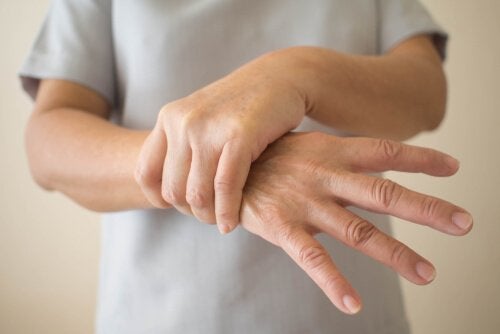Can you identify the first signs of Parkinson’s disease?This neurodegenerative disorder affects the nervous system, triggering mechanisms that cause damage and subsequent deterioration of neurons located in the black substance of the brain.
The average age of onset of the disease is 60 years and the incidence increases considerably with age; however, between 5% and 10% of people with Parkinson’s disease have an early onset, which began before age 50.
- Some cases of early onset are related to mutations in specific genes.
- Such as the parkin gene.
- People with one or more close family members with Parkinson’s disease have an increased risk of developing the disease.
However, the total risk remains between 2% and 5%, unless the family has a known genetic mutation for the disease. It is estimated that between 15% and 25% of people with Parkinson’s disease know they have a family member with the disease.
In very rare cases, symptoms of the disease may appear before age 20. This disease is known as juvenile parkinsonism. It usually begins with dystonia and bradykinesia, and symptoms usually improve with the drug Levodopa.
The first description of the disease was made by doctor James Parkinson in 1817. This British doctor observed six patients with the typical symptoms of the disease. He called it “restless paralysis. ” Later, it was the famous French neurologist Charcot who called Parkinson’s disease.
As we said at the beginning, the disease affects the nervous system, causing the degeneration of neurons of the black substance in the brain, which produce dopamine. Dopamine is a fundamental chemical for the movement of the body to be performed correctly.
When the brain does not have enough dopamine to maintain good movement control, messages indicating how and when to move are transmitted incorrectly, so typical motor symptoms of the disease gradually appear.
It has also been observed that other neurons are affected by the disease, so other neurotransmitters such as Serotonin, Norepinephrine and Acetylcholine are also affected, which would explain other non-motor symptoms of the disease.
When we think of someone suffering from the disease, we imagine an old man with a tremor in his hands, walking very slowly, with a slightly hunched back and a certain degree of body stiffness, it is true that this image is not far from reality.
However, tremors, stiffness and slow walking are not the only symptoms of Parkinson’s disease. In addition to these and other motor symptoms, there is a wide range of non-motor symptoms.
These non-motor symptoms are related to cognitive, behavioral and emotional changes and can cause serious difficulties in patients’ daily lives.
On the contrary, it is not uncommon for motor and non-motor symptoms typical of Parkinson’s disease to develop in very young people. Although the disease is more common in older people, it is not exclusive.
The first symptoms of early onset Parkinson’s disease, also known as juvenile Parkinson’s, may be precisely the least typical, non-motor. Because symptoms are not unique to the disease and are shared by other diseases, diagnosis is sometimes complicated.
There are a number of symptoms that can alert us to the early onset of the disease. There are more signs, but let’s look at these seven main ones:
As we have seen, Parkinson’s disease is not an exclusive disease of the elderly, there is a type of disease that attacks young people, which can be very disconcerting, these seven signs can help you find a specialist who can make an early diagnosis of the disease. Disease.

